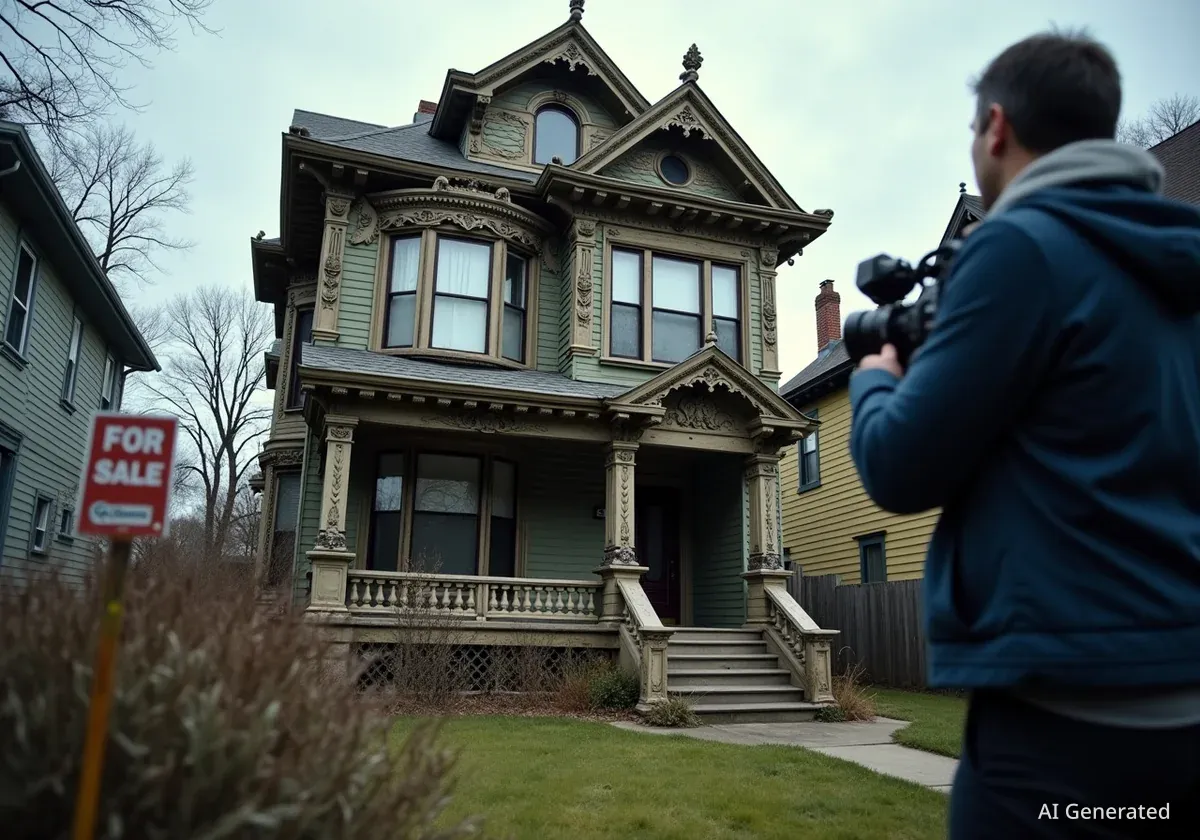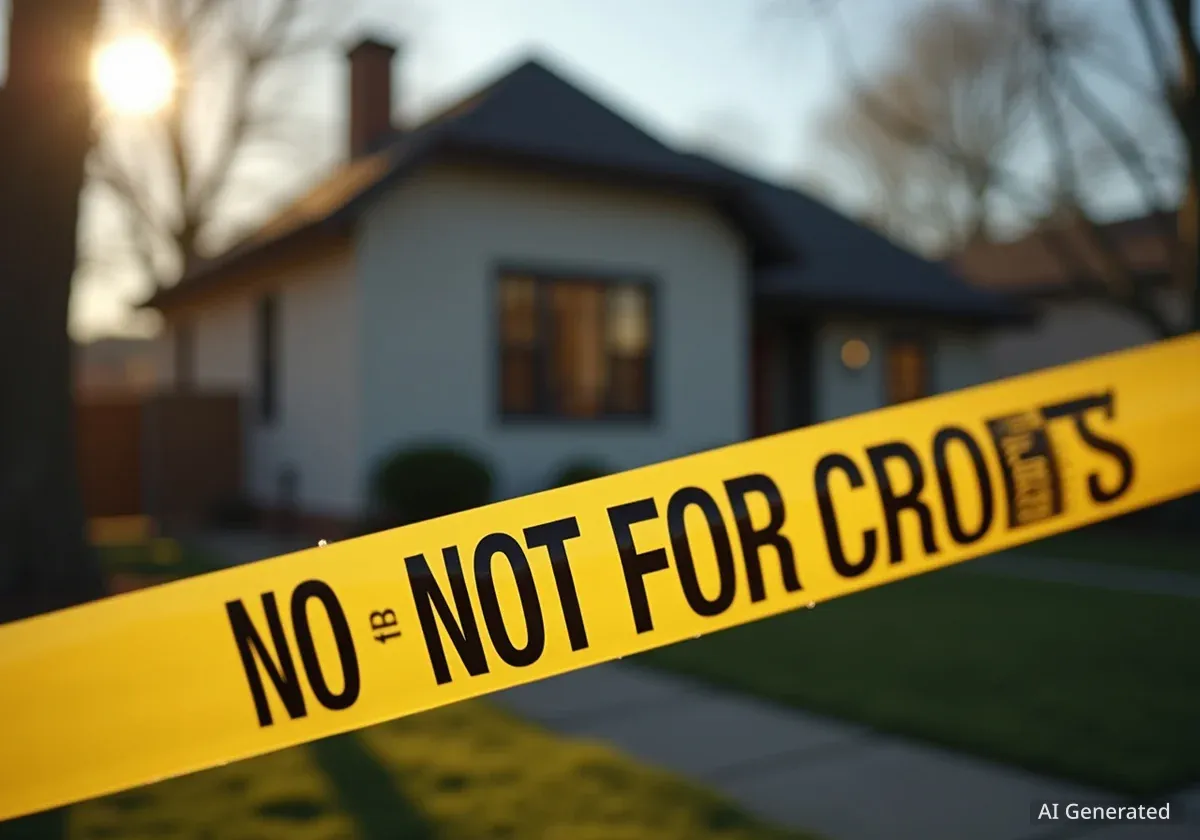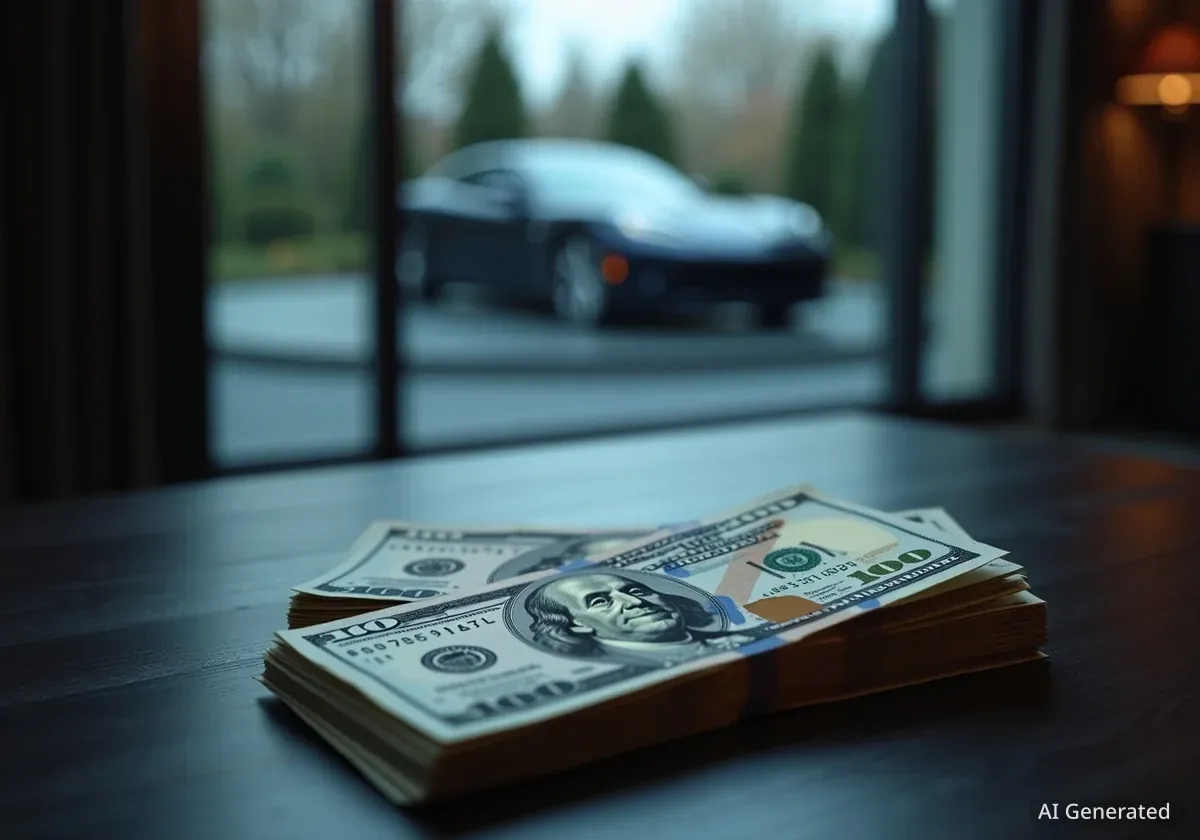A routine real estate story about a uniquely decorated home in Astoria, Queens, has led to the uncovering of a significant criminal investigation. The property, initially noted for its eccentric exterior and interior design, became the focal point of a probe after a reporter's background research revealed inconsistencies in public records.
What began as a feature on a quirky home with a fire-engine red and butter-yellow facade has since evolved into a serious legal matter, drawing attention from both local residents and city authorities. The case highlights how seemingly ordinary properties can sometimes conceal complex illicit activities.
Key Takeaways
- A house in Astoria, Queens, known for its flamboyant design, is at the center of a criminal investigation.
- The inquiry was triggered by a journalist looking into the property for a real estate feature story.
- Initial research into public records, including deeds and permits, raised red flags about the property's ownership history.
- The investigation has shifted focus from the home's aesthetics to potential financial crimes, impacting the local community's perception of the neighborhood.
An Unconventional Property in Astoria
Located in a typically traditional Queens neighborhood, the house immediately stood out. Its exterior was painted in a jarring combination of bright, butter-yellow and a bold, fire-engine red. This color scheme extended to a surrounding wrought-iron gate, which was adorned with metallic flowers painted in the same two tones.
The interior of the home was described by initial observers as equally unconventional. Reports detailed a living space filled with rainbow-colored furniture, multiple ornate chandeliers, and a large, artificial cherry blossom tree that appeared to grow from the living room floor. The design choices were so distinct that one editor initially described the property as looking like "an acid trip in house form."
This unique aesthetic was the original reason for journalistic interest. The plan was to feature the home in a real estate section, highlighting its one-of-a-kind character and the story behind its design. However, standard due diligence before publication would soon take the story in a completely different direction.
From Quirky Feature to Criminal Probe
The transition from a lighthearted real estate feature to a serious news story began during the initial research phase. While verifying ownership details and property history through public records, the reporter assigned to the story noticed several irregularities. These discrepancies involved the property's title transfers and recent mortgage documents.
Further examination of city records revealed a pattern of frequent sales and refinancing over a short period, with valuations that seemed inconsistent with comparable properties in the Astoria area. This activity suggested something more complex than a simple homeownership story. The focus of the reporting quickly shifted from the home's interior design to the financial transactions associated with it.
"When you see a property change hands multiple times in two years with the price jumping 50% each time without any major renovations, it's a major red flag," an anonymous source familiar with real estate fraud investigations noted. "It often points to a shell game."
Upon discovering these financial anomalies, the journalist began to investigate the names listed on the deeds and mortgages. This led to the discovery that some of the individuals involved had connections to previously investigated financial crimes, prompting the reporter to contact law enforcement authorities with the findings.
The Investigation Unfolds
Once alerted, authorities launched a formal investigation into the activities connected to the Astoria property. The probe is reportedly centered on a suspected mortgage fraud and money laundering ring that used the house as a key asset in its operations.
Understanding Mortgage Fraud
Mortgage fraud can take many forms. One common scheme involves artificially inflating a property's value through corrupt appraisals. The property is then sold to a colluding buyer, and a loan is secured for the inflated amount. The perpetrators then pocket the difference between the actual value and the fraudulent loan amount, leaving the lender with a high-risk asset.
Investigators believe the colorful house was used to obscure these illicit transactions. The frequent buying and selling among a network of associates allegedly helped to launder money by creating a complex paper trail that made the funds appear legitimate. The eccentric decorations may have been an intentional distraction or simply a reflection of the unusual nature of the entire operation.
Key Elements of the Alleged Scheme:
- Inflated Appraisals: Documents suggest the property's value was artificially increased multiple times without corresponding improvements.
- Straw Buyers: The names on property documents may belong to individuals who acted as fronts for the primary operators of the scheme.
- Layered Transactions: The home was allegedly bought and sold repeatedly within a closed network to disguise the origin of illicit funds.
While the investigation is ongoing, court documents indicate that several individuals are being looked at for their roles in the scheme. The case serves as a stark reminder that even the most colorful exteriors can hide serious criminal undertakings.
Community Reaction and Market Impact
The news has sent ripples through the Astoria community. Many residents who had long viewed the house as a local curiosity are now seeing it in a different light. Some have expressed shock and concern that such activities could take place in their neighborhood.
Local real estate agents worry about the potential impact on property values. "No one wants to hear that a home on their block was part of a criminal ring," said one Astoria-based agent. "It creates a stigma that can be difficult to shake, even if it's an isolated incident."
Ultimately, the story of the butter-yellow and fire-engine red house has become a cautionary tale. It began as a story about unusual taste in home decor but concluded as a serious report on financial crime, demonstrating the vital role of journalistic inquiry in uncovering stories of public interest that lie just beneath the surface.





